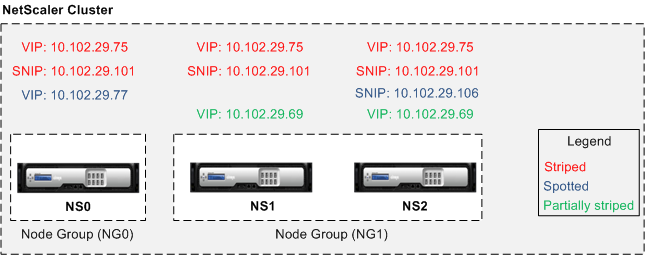-
-
Striped, partially striped, and spotted configurations
This content has been machine translated dynamically.
Dieser Inhalt ist eine maschinelle Übersetzung, die dynamisch erstellt wurde. (Haftungsausschluss)
Cet article a été traduit automatiquement de manière dynamique. (Clause de non responsabilité)
Este artículo lo ha traducido una máquina de forma dinámica. (Aviso legal)
此内容已经过机器动态翻译。 放弃
このコンテンツは動的に機械翻訳されています。免責事項
이 콘텐츠는 동적으로 기계 번역되었습니다. 책임 부인
Este texto foi traduzido automaticamente. (Aviso legal)
Questo contenuto è stato tradotto dinamicamente con traduzione automatica.(Esclusione di responsabilità))
This article has been machine translated.
Dieser Artikel wurde maschinell übersetzt. (Haftungsausschluss)
Ce article a été traduit automatiquement. (Clause de non responsabilité)
Este artículo ha sido traducido automáticamente. (Aviso legal)
この記事は機械翻訳されています.免責事項
이 기사는 기계 번역되었습니다.책임 부인
Este artigo foi traduzido automaticamente.(Aviso legal)
这篇文章已经过机器翻译.放弃
Questo articolo è stato tradotto automaticamente.(Esclusione di responsabilità))
Translation failed!
Striped, partially striped, and spotted configurations
By virtue of command propagation, all nodes in a cluster have the same configurations. However, you might want some configurations to be available only on certain cluster nodes. While you cannot restrict the nodes on which the configurations are available, you can specify the nodes on which the configurations are active.
For example, you can:
- define a SNIP address to be active on only one node, or
- define a SNIP address to be active on all nodes, or
- define a VIP address to be active on only one node, or
- define a VIP address to be active on all nodes, or
- define a VIP address to be active only on two nodes of a 3-node cluster
Depending on the number of nodes the configurations are active on, cluster configurations are referred to as striped, partially striped, or spotted configurations.
Figure 1. Three-node cluster with striped, partially striped, and spotted configurations

The following table provides more details on the types of configurations:
| Configuration Type | Active on | Applicable to | Configurations |
|---|---|---|---|
| Striped configuration | All the cluster nodes | All entries | No specific configuration required to make an entity striped. By default, all entities defined on a cluster IP address are striped on all the cluster nodes. |
| Partially striped configuration | A subset of cluster nodes | See Cluster Node groups | Bind the entities that you want to be partially striped, to a node group. The configuration is active only on the cluster nodes that belong to the node group. |
| Spotted configuration | Single cluster node | See List of spotted configurations | A spotted configuration can be defined using one of two approaches. SNIP address When creating the SNIP address, specify the node on which you want the SNIP address to be active, as the owner node. Example, add ns ip 10.102.29.106 255.255.255.0 -type SNIP -ownerNode 2 (assuming node NS2 ID is 2). Note: You cannot change the ownership of a spotted SNIP address at run time. To change the ownership, you must first delete the SNIP address and add it again by specifying the new owner. Entities that can be bound to a node group. By binding the entity to a single-member node group. |
Note
When you disable USIP, Citrix recommends you to use spotted SNIP addresses. You can use striped SNIP addresses only if there is a shortage of IP addresses. The use of striped IP addresses can result in ARP flux issues if no spotted IP addresses are present in the same subnet for ARP resolution.
When you enable USIP, Citrix recommends you to use striped SNIP addresses as a gateway for server initiated traffic.
List of spotted configuration
- IPv4 addresses
- IPv6 addresses
- ARP entries
- Interface settings
- IPv6 Static Routes (Route6)
- IP tunnel
- IPv6 tunnel
- Reverse network address translation (RNAT)
- Policy-based routes for IPv4 (PBR)
- Policy-based routes for IPv6 (PBR6)
- Cluster LAG
- Neighbor discovery protocol (ND6) entries
- Failover interface set (FIS)
- Linksets
- SNMP MIB/engine ID
- Diameters
- Citrix ADC VPX param
- Hostname
Share
Share
In this article
This Preview product documentation is Cloud Software Group Confidential.
You agree to hold this documentation confidential pursuant to the terms of your Cloud Software Group Beta/Tech Preview Agreement.
The development, release and timing of any features or functionality described in the Preview documentation remains at our sole discretion and are subject to change without notice or consultation.
The documentation is for informational purposes only and is not a commitment, promise or legal obligation to deliver any material, code or functionality and should not be relied upon in making Cloud Software Group product purchase decisions.
If you do not agree, select I DO NOT AGREE to exit.